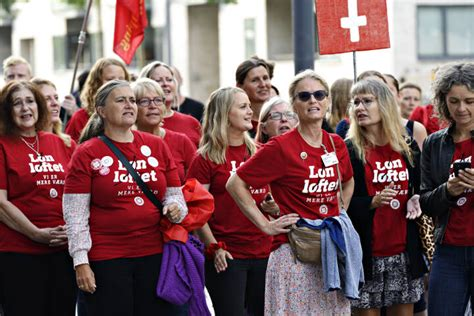
The State Salary Committee says that nurses are paid too much in Denmark
The Salary Committee of the Danish State published a report comparing salaries in different professions, and concluded that nurses are paid too much in Denmark. The committee was set up to investigate especially the payment of nurses in 2021. In 2021, Danish nurses defied the tripartite system, in which the workers’ unions and employers negotiate collective agreements under the approval of the State. That time the union bureaucrats supported the proposal handed to them by the State and the employers, but the majority of the striking nurses did not accept this and continued the strike without the leadership of the Danish Nurses’ Organization, the trade union representing nurses in Denmark. The victory was economical, but mostly moral. Now this committee is saying that the nurses are paid too much, after comparing the salaries with professions that do not work nights and do not have similar working conditions. Many nurses have resigned in protest to the working conditions, but instead of improving the conditions, the shifts are being “optimized” in order to get more out of fewer staff. The hospital staff is working under great pressure, and the workers and patients pay the price – for example, in the region of Central Jutland 20 per cent of cancer patients were not treated within the time limitations set, and the patients have not been informed of this. Treatments were delayed also in many other regions of Denmark because of too little capacity.
The website Socialistisk Revolution writes that the strike of 2021 showed that in the “Danish model” the State is not a mere “neutral” overlooker of the negotiations as is claimed, but it actively gets involved in them in benefit of the employers. The negotiations only take place for the interest of the State and through the State. The class-collaborative nature of the model was clearly exposed. In 2021, the State reacted by declaring the continued strike illegal, but in the end it was unable to threaten the nurses, who had nothing to lose and knew that the healthcare system would collapse without them. Other than again betraying the nurses, now the bourgeoisie is also using the report to pit different workers, for example, teachers and nurses, against each other in preparation to the collective agreements of the public sector in Fall.
The strike in 2021 especially raised the question of lower pay in “women’s professions” – like healthcare and education. This is confirmed by the report of the Salary Committee, which shows that average salaries in female-dominated professions, with as high level of education and similar level of responsibilities as male dominated professions, are lower than in male-dominated ones. Even in the Nordic countries, which claim to be prime examples of gender equality, women often work in professions corresponding to the role of women as mere “homemakers”, with many workers in these branches working part-time, and these professions are very often underpaid. In one hand, the dire under-staffing and under-payment in health care and for example education is explained by the crisis of the so-called welfare State and the aging population of the imperialist countries. In the other hand, it is explained by how the yellow union movement has let down the women’s struggle over and over again, as we see in the example of the Danish nurses.

